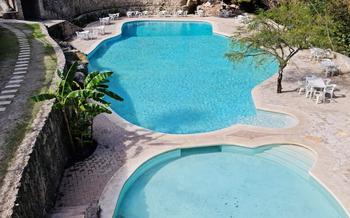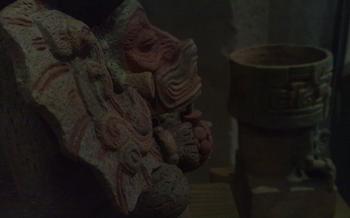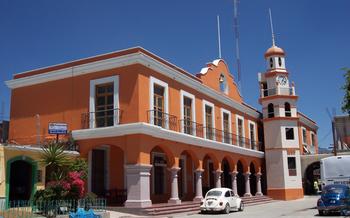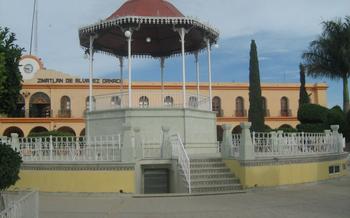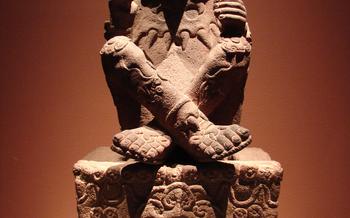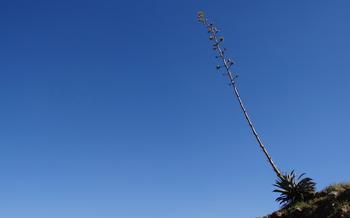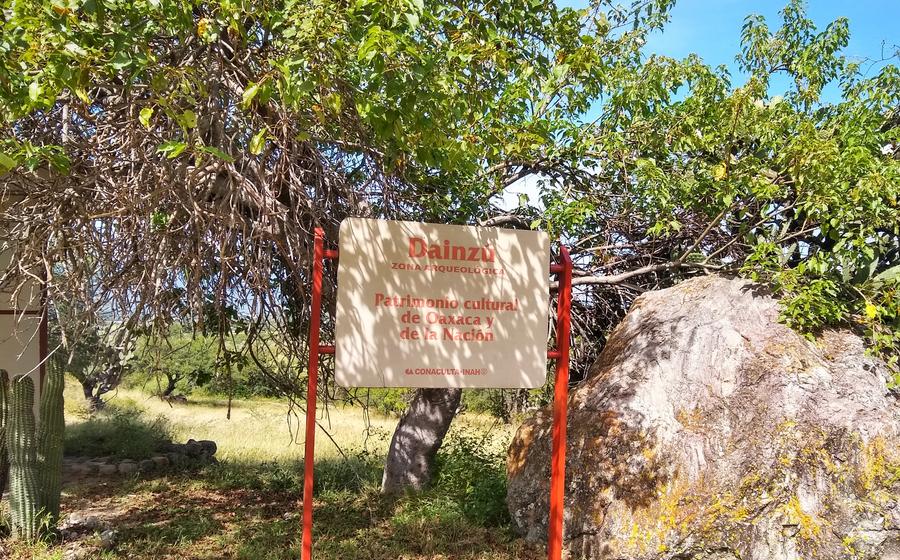
Dainzú Archaeological Site
- Exploring Ancient Ruins: Unveiling Dainzú's History and Significance
- Transportation Tips: Navigating to Dainzú
- Admission Fees and Operating Hours: Planning Your Visit
- Guided Tours: Enhancing Your Exploration
- Excavations and Artifacts: Unearthing Dainzú's Secrets
- The Ball Court: A Place for Ritual and Recreation
- The Stelae of Dainzú: Inscribed Stones that Speak
- The Tombs of Dainzú: Windows into the Afterlife
- The Observatory: Connecting with the Cosmos
- The Museum: Preserving Dainzú's Legacy
- Surrounding Nature: Embracing the Landscape
- Cultural Immersion: Engaging with the Zapotec Community
- Local Cuisine: Savoring the Flavors of Oaxaca
- Insider Tip: Unveiling Hidden Gems
Exploring Ancient Ruins: Unveiling Dainzú's History and Significance
Nestled amidst the enchanting landscapes of Oaxaca, Mexico, lies the ancient Zapotec city of Dainzú, a treasure trove of archaeological wonders that transport visitors back in time. Once a thriving center of Zapotec civilization, Dainzú offers a glimpse into the rich cultural heritage and architectural prowess of this ancient Mesoamerican society.
Founded around 500 BC, Dainzú flourished as a major political and ceremonial center for centuries, leaving behind an impressive legacy of well-preserved ruins. Its strategic location atop a hill overlooking the surrounding valleys allowed the Zapotec to control trade routes and maintain their dominance in the region.
Dainzú's unique architectural features set it apart from other Zapotec sites. The city boasts a remarkable array of platforms, temples, tombs, and a ball court, all showcasing the Zapotec's advanced engineering skills and artistic sensibilities. The site's distinctive architecture, combined with its rich history and cultural significance, has earned it recognition as one of Mexico's most important archaeological treasures.
Excavations at Dainzú have unearthed a wealth of artifacts and inscriptions, providing valuable insights into the daily lives, beliefs, and social structures of the Zapotec people. These discoveries have contributed significantly to our understanding of ancient Mesoamerican cultures and shed light on the complex interactions between different civilizations in the region.
Transportation Tips: Navigating to Dainzú
Reaching the Dainzú Archaeological Site from Oaxaca City is a relatively straightforward journey. The most convenient option is to rent a car, which offers the flexibility to explore the site at your own pace and visit other nearby attractions. The drive takes approximately 45 minutes to 1 hour, depending on traffic conditions. Once you arrive, ample parking is available near the site's entrance, ensuring easy accessibility for visitors.
For those without access to a car, guided tours are readily available from Oaxaca City. These tours typically include transportation to and from the site, making it a hassle-free way to experience Dainzú. The advantage of booking a tour is that you'll have access to knowledgeable guides who can provide insights into the site's history and significance.
If you prefer a more adventurous approach, consider taking a local bus from Oaxaca City to the town of San Lorenzo Albarradas, located just a few kilometers from Dainzú. From there, you can either walk or take a short taxi ride to the archaeological site. This option offers a more immersive experience, allowing you to interact with locals and witness the vibrant culture of the region.
Admission Fees and Operating Hours: Planning Your Visit
Before embarking on your journey to Dainzú, it's essential to plan your visit by considering the admission fees and operating hours. Currently, the entrance fee for foreign visitors is approximately $8, while Mexican nationals and residents pay a reduced fee of $Students and children may be eligible for additional discounts, so be sure to inquire upon arrival.
Dainzú's operating hours are generally from 9:00 AM to 5:00 PM, seven days a week. However, it's advisable to check the official website or contact the site authorities in advance to confirm any potential changes or special closures during holidays or events.
To make the most of your visit, plan to arrive early in the morning when the temperatures are cooler, and the crowds are typically smaller. This will allow you ample time to explore the site at a relaxed pace and avoid the midday heat. Alternatively, if you prefer a more serene experience, consider visiting later in the afternoon when the crowds have dispersed.
Guided Tours: Enhancing Your Exploration
Enrich your visit to the Dainzú Archaeological Site by booking a guided tour. Experienced guides offer invaluable insights into the history, culture, and significance of this ancient Zapotec city. Tours are available in English and accommodate groups of varying sizes.
Guides will lead you through the main plaza, explaining the functions of the temples, platforms, and tombs. They'll decipher the symbolism and rituals associated with each structure, bringing the site's history to life. Discover the purpose of the ball court, where the Mesoamerican ball game held deep cultural and religious significance. Learn about the rules, rituals, and symbolism surrounding this ancient sport.
Delve into the mysteries of the stelae, intricately carved stones that serve as historical records and sources of information. Guides will decipher the images, symbols, and inscriptions, providing insights into the Zapotec writing system and their cultural beliefs.
Explore the tombs of Dainzú, where the Zapotec buried their dead with elaborate rituals and offerings. Guides will explain the construction techniques, materials, and architectural features of the tombs, shedding light on Zapotec beliefs about the afterlife.
Finally, visit the observatory, where Zapotec priests made astronomical observations and aligned the city with celestial events. Learn about their advanced knowledge of celestial movements and how they used this knowledge to guide their daily lives.
By booking a guided tour, you'll gain a deeper understanding of Dainzú's rich history and cultural significance, making your visit an unforgettable and enriching experience.
Excavations and Artifacts: Unearthing Dainzú's Secrets
Archaeological excavations at Dainzú have revealed a wealth of artifacts and uncovered intriguing insights into the Zapotec civilization. These excavations, meticulously conducted by teams of archaeologists and researchers, have shed light on the daily lives, customs, and beliefs of the ancient Zapotec people. Discoveries include intricately carved stone sculptures, finely crafted pottery, and valuable tools that provide glimpses into their artistic prowess and technological advancements.
Among the most notable artifacts unearthed at Dainzú are ceramic figurines depicting various deities, animals, and human figures. These figurines offer valuable insights into Zapotec religious beliefs and artistic expressions. Additionally, archaeologists have uncovered elaborate tombs containing skeletal remains, funerary offerings, and precious ornaments, providing clues about Zapotec burial practices and social hierarchy.
Ongoing research and conservation efforts are crucial for preserving and protecting Dainzú's legacy. Archaeologists continue to study the site's architecture, artifacts, and inscriptions to reconstruct the Zapotec civilization's history and cultural practices. Conservation efforts focus on preserving the site's structures, artifacts, and natural surroundings for future generations to appreciate and learn from.
The Ball Court: A Place for Ritual and Recreation
The ball court at Dainzú is a testament to the cultural and religious significance of the ancient Zapotec civilization. This rectangular court, measuring approximately 55 meters in length and 20 meters in width, is an iconic feature of the archaeological site.
The ball court's layout is typical of Mesoamerican ball courts, with sloping sides and two end zones marked by stone markers. The game played here was not merely a sport but a ritual activity deeply intertwined with Zapotec mythology and cosmology.
The rules of the game are not fully understood, but it is believed that teams of players used their hips and elbows to propel a rubber ball through a stone ring placed high on the court walls. Skill, strategy, and athleticism were required to score a point, and the game often had religious or ceremonial significance.
The ball court at Dainzú is a reminder of the Zapotec civilization's rich cultural traditions and their deep connection to the sacred and the divine. It invites visitors to imagine the vibrant spectacle of ancient Zapotec athletes competing in this ritualized game, their movements echoing the rhythms of the cosmos.
The Stelae of Dainzú: Inscribed Stones that Speak
The Dainzú Archaeological Site is home to a collection of intricately carved stelae, standing stones that served as historical records and sources of information for the Zapotec civilization. These stelae, ranging in size from small markers to imposing monoliths, offer valuable insights into the Zapotec writing system, their history, and their cultural beliefs.
The stelae are adorned with a variety of images, symbols, and inscriptions, each telling a unique story about the Zapotec people. Some depict scenes of daily life, such as farming, hunting, or religious ceremonies. Others commemorate important events, such as the accession of a new ruler or a military victory. Still, others contain complex astronomical information, demonstrating the Zapotec's advanced knowledge of celestial movements.
One of the most notable stelae at Dainzú is known as the "Dainzú Stela " It features a detailed carving of a Zapotec ruler seated on a jaguar throne, surrounded by elaborate headdresses and other symbols of power. The stela also includes a long inscription in the Zapotec writing system, providing valuable information about the ruler's lineage and accomplishments.
By studying the stelae of Dainzú, archaeologists and historians have gained a deeper understanding of the Zapotec civilization. These inscribed stones have helped to shed light on the Zapotec's political structure, their religious beliefs, their economic system, and their cultural practices. They continue to be a source of fascination and inspiration for visitors to the Dainzú Archaeological Site, offering a glimpse into the rich and complex history of this ancient civilization.
The Tombs of Dainzú: Windows into the Afterlife
The Dainzú Archaeological Site is home to a variety of tombs, each offering a glimpse into the Zapotec culture's beliefs and practices surrounding death and the afterlife. These tombs can be classified into three main types: chamber tombs, shaft tombs, and rock-cut tombs. Chamber tombs, the most common type, consist of a rectangular chamber accessed by a staircase. Shaft tombs, on the other hand, are deep, vertical shafts with a chamber at the bottom. Rock-cut tombs, as the name suggests, are carved directly into the rock.
The construction of the tombs showcases the Zapotec's advanced engineering skills. The chamber tombs, for instance, feature corbelled vaults, a technique where each layer of stone is slightly offset, creating a self-supporting arch. The tombs were also adorned with elaborate decorations, including paintings, sculptures, and carved stone panels depicting scenes from Zapotec mythology and daily life.
The artifacts found within the tombs offer valuable insights into the Zapotec's burial practices and beliefs about the afterlife. Grave goods such as pottery, jewelry, and tools were buried alongside the deceased to accompany them on their journey to the underworld. The tombs also contained the remains of sacrificial victims, suggesting that human sacrifice was an integral part of Zapotec funerary rituals.
By studying the tombs of Dainzú, we gain a deeper understanding of the Zapotec's complex belief system and their relationship with the afterlife. These structures serve as windows into a lost world, providing valuable clues about the social, cultural, and religious practices of this ancient civilization.
The Observatory: Connecting with the Cosmos
Among the many wonders of Dainzú, the observatory stands as a testament to the Zapotec civilization's advanced knowledge of astronomy. This carefully constructed structure served as a celestial calendar, allowing Zapotec priests to track the movements of the sun, moon, and stars.
The observatory is strategically aligned with astronomical events, enabling the Zapotecs to predict solstices, equinoxes, and other celestial phenomena with remarkable accuracy. This knowledge was crucial for agricultural planning, religious ceremonies, and understanding the cycles of time.
By studying the cosmos, the Zapotec priests gained insights into the workings of the universe and their place within it. The observatory represents the culmination of their scientific and spiritual pursuits, demonstrating their deep connection to the cosmos.
As you explore the observatory, imagine the Zapotec priests gazing up at the night sky, deciphering the patterns of stars and planets, and connecting with the divine forces that governed their world.
The Museum: Preserving Dainzú's Legacy
Housed within the archaeological site, the museum at Dainzú serves as a repository of knowledge, showcasing artifacts, replicas, and educational materials that illuminate the rich history and cultural heritage of this ancient Zapotec city. Through interactive exhibits and displays, visitors can delve deeper into the significance of Dainzú's ruins, exploring the daily lives, customs, and beliefs of its inhabitants. Artifacts such as pottery, jewelry, and tools provide tangible evidence of the Zapotec's advanced craftsmanship and artistic skills, while replicas of sculptures and stelae offer a glimpse into the intricate symbolism and iconography that adorned their sacred spaces. The museum's educational displays provide context and interpretation, helping visitors understand the cultural and historical significance of the artifacts and the site as a whole. By preserving and showcasing Dainzú's legacy, the museum plays a vital role in ensuring that the stories and traditions of this ancient civilization continue to live on.
Surrounding Nature: Embracing the Landscape
The Dainzú Archaeological Site is nestled amidst a stunning natural landscape, providing visitors with an opportunity to immerse themselves in the region's rich biodiversity. The surrounding area boasts a diverse ecosystem, home to an array of flora and fauna. Birdwatching enthusiasts can delight in spotting colorful species such as hummingbirds, woodpeckers, and falcons soaring through the skies. For those seeking an active adventure, hiking trails meander through the picturesque terrain, offering breathtaking views of the archaeological site and its surroundings.
Embrace the tranquility of nature as you wander amidst the lush vegetation, discovering hidden waterfalls and secluded spots perfect for a picnic. The local flora and fauna add vibrancy to the landscape, creating a harmonious blend of culture and nature. Remember to practice responsible eco-tourism by respecting the environment and minimizing your impact on the delicate ecosystem.
Cultural Immersion: Engaging with the Zapotec Community
When visiting Dainzú, it's essential to respect and support the local Zapotec community, who are the descendants of the ancient Zapotec civilization. Take the opportunity to interact with local artisans, weavers, and other community members to gain insights into their rich cultural heritage. Visit local markets or shops to purchase authentic Zapotec handicrafts and souvenirs, directly supporting the community's economy and preserving their traditional arts and crafts. By engaging with the Zapotec community, you'll gain a deeper understanding of their culture, traditions, and way of life, making your visit to Dainzú a truly immersive and enriching experience.
Local Cuisine: Savoring the Flavors of Oaxaca
Oaxaca's cuisine is a symphony of flavors, colors, and textures, renowned for its rich mole sauces, diverse street food, and fresh, locally sourced ingredients. When visiting Dainzú, take the opportunity to indulge in the culinary delights of the region.
Start your culinary journey with a traditional Oaxacan breakfast of chilaquiles, crispy fried corn tortillas smothered in a spicy salsa, or huevos rancheros, eggs poached in a tangy tomato sauce, accompanied by refried beans and tortillas.
For lunch, head to one of the nearby markets or restaurants to sample the local street food. Try tlayudas, large, crispy tortillas topped with beans, meat, cheese, and salsa, or memelas, smaller tortillas filled with various fillings, such as beans, cheese, or potatoes.
Don't miss the chance to savor the region's famous moles, complex sauces made with a blend of chiles, spices, and nuts. Try the classic mole negro, made with over 20 ingredients, including chocolate, or mole coloradito, a milder red mole with a hint of sweetness.
End your meal with a refreshing agua fresca, a fruit-based drink made with fresh fruit, water, and sugar, or indulge in a sweet treat like nieve, a traditional Mexican ice cream made with fresh fruit or milk.
Remember to ask about local specialties and recommendations to discover hidden culinary gems that will tantalize your taste buds and leave you craving more.
Insider Tip: Unveiling Hidden Gems
As you explore Dainzú, keep an eye out for hidden gems that often go unnoticed by casual visitors. Venture beyond the main tourist areas to discover lesser-known features that offer a deeper Einblick into the site's history and significance.
One such hidden gem is the Stela of the Dancers. Tucked away in a secluded corner, this stela depicts a group of Zapotec dancers engaged in a ritual performance. The intricate carvings provide a glimpse into the vibrant cultural traditions of the ancient Zapotec people.
Another hidden gem is the Observatory Platform. Located on a hilltop overlooking the main plaza, this platform was used by Zapotec priests to observe the stars and planets. Here, you can marvel at the astronomical alignments that guided the Zapotec calendar and religious rituals.
For a unique perspective of the site, climb to the top of the Temple of the Sun. This pyramid-shaped structure offers panoramic views of the surrounding landscape, including the distant mountains and valleys. Capture breathtaking photos and appreciate the sheer scale and majesty of Dainzú from this elevated vantage point.
Remember, the true beauty of Dainzú lies in its ability to transport you back in time. Embrace the spirit of exploration and seek out these hidden gems to gain a deeper understanding of this remarkable ancient city.
